may be right, however this time I will be more specific.. The ugliness surrounding me
is a permanent stone in my shoe. No where to look except my space. One tries
to see a little beauty here or there, stretching unsuccessfully the imagination and the good will to the limit.
The concept of composition has been mentioned. You know, placing the vegetation as the painter places the objects in a picture. Symmetry, perspective,
depth, contrasts of texture, color, size, and so on...The village idiots into this field
of work (landscape management/installation) evidently do not know, comprehend the concept at all or they do and do not have the plants to create the effect.. I stopped thinking about it, its no point.
editors note
To leave no doubts for the
reader of what the garden
should be, its fundamentals, according to your
humble servant and people
who know more,
here we go.
Tropical Ornamentals
A Guide
by
W. Arthur Whistler
To leave no doubts for the
reader of what the garden
should be, its fundamentals, according to your
humble servant and people
who know more,
here we go.
Tropical Ornamentals
A Guide
by
W. Arthur Whistler
This is the only book you need for reference when working/identifying tropicals. I would add vegetation that you could find in reputable nurseries, (there is none in
the San Juan Metro Area) or in the country side, or by seed catalogs. If you can not
propagate your options will always be limited.
"Hedge plants are shrubs, or small trees or vines trimmed to be shrubs, that serve as
a physical barrier or fence. Hedge plants can have colorful leaves, or may be covered with colorful flowers. Other may have neither colorful leaves nor flowers but have dense, attractive green foliage that produces a desirable form. The presence of thorns is also sometimes a desirable quality of hedge plants, particularly if the hedge
is meant to inhibit passage.
Screen plants are similar to hedge plants but are more of a visual barrier than a physical barrier, for example blocking the view of an unsightly building or lights
for traffic.
Foundation plants are similar to hedges and screens but are planted at the bases of
buildings to blend them into their surroundings.
Border plants are similar in function but are usually lower in stature and are planted
along the edge of another kind of plant such as a hedge, covering the often relatively
barren shrub bases. Border around areas of ground cover or flower beds provide
a contrasting boundary.
Ground cover plants are herbs or low shrubs usually less than 50cm high (20 in)
used to cover an area, either for providing attractive, low dense vegetation or to inhibit weed growth. Ground covers may have beautiful foliage, or if colors is desired , then species with attractive flowers or colorful leaves are used.
Vines or plants that can be trained as vines can be used to cover fences, walls,
trellises and arches. The difference between a shrub and a vine is not always
clear. If a shrub tends to have weak, spreading branches is referred to as scandent.
Woody vines are called lianas and have the advantage over herbaceous vines, especially annual herbaceous vines, of growing higher and being longer lived."
Now if you got these elements of the whole clear imagine if while applying them
you confuse one with the other. IN this isle of the absurd it happens all the time.
Even worse, the same bush, tree or plant is used WRONG a million times.
That is why in Puerto Rico the concrete/asphalt isle we got: Ficus planted as hedges.
Chefferas as ground covers, hedges, screens, with recently acquired Acaliphas for similar intention. A real pain in in your eyes! Like watching a Francis Bacon painting of distorted, dismembered parts constantly in your living room.
Want to see it in pictures, here? Move all the way down until you find: TWO LONELY TREES, a picture right side of the blog and move down..Check them out installations in a hotel and the entrance of the Botanical Garden in RIO, really pathetic. ..Almost forgot the book in question is focused (as almost always) for readers in countries with four seasons, but useful for anyjuan! Time to go
the San Juan Metro Area) or in the country side, or by seed catalogs. If you can not
propagate your options will always be limited.
"Hedge plants are shrubs, or small trees or vines trimmed to be shrubs, that serve as
a physical barrier or fence. Hedge plants can have colorful leaves, or may be covered with colorful flowers. Other may have neither colorful leaves nor flowers but have dense, attractive green foliage that produces a desirable form. The presence of thorns is also sometimes a desirable quality of hedge plants, particularly if the hedge
is meant to inhibit passage.
Screen plants are similar to hedge plants but are more of a visual barrier than a physical barrier, for example blocking the view of an unsightly building or lights
for traffic.
Foundation plants are similar to hedges and screens but are planted at the bases of
buildings to blend them into their surroundings.
Border plants are similar in function but are usually lower in stature and are planted
along the edge of another kind of plant such as a hedge, covering the often relatively
barren shrub bases. Border around areas of ground cover or flower beds provide
a contrasting boundary.
Ground cover plants are herbs or low shrubs usually less than 50cm high (20 in)
used to cover an area, either for providing attractive, low dense vegetation or to inhibit weed growth. Ground covers may have beautiful foliage, or if colors is desired , then species with attractive flowers or colorful leaves are used.
Vines or plants that can be trained as vines can be used to cover fences, walls,
trellises and arches. The difference between a shrub and a vine is not always
clear. If a shrub tends to have weak, spreading branches is referred to as scandent.
Woody vines are called lianas and have the advantage over herbaceous vines, especially annual herbaceous vines, of growing higher and being longer lived."

Now if you got these elements of the whole clear imagine if while applying them
you confuse one with the other. IN this isle of the absurd it happens all the time.
Even worse, the same bush, tree or plant is used WRONG a million times.
That is why in Puerto Rico the concrete/asphalt isle we got: Ficus planted as hedges.
Chefferas as ground covers, hedges, screens, with recently acquired Acaliphas for similar intention. A real pain in in your eyes! Like watching a Francis Bacon painting of distorted, dismembered parts constantly in your living room.
Bonus for our
readers in
Finland
and
Yellowknife
Canada
our highest longitudinal
readers.
readers in
Finland
and
Yellowknife
Canada
our highest longitudinal
readers.
Want to see it in pictures, here? Move all the way down until you find: TWO LONELY TREES, a picture right side of the blog and move down..Check them out installations in a hotel and the entrance of the Botanical Garden in RIO, really pathetic. ..Almost forgot the book in question is focused (as almost always) for readers in countries with four seasons, but useful for anyjuan! Time to go


















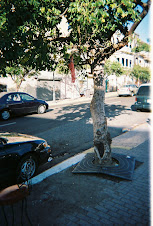-25.jpg)
-24.jpg)
























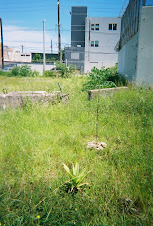




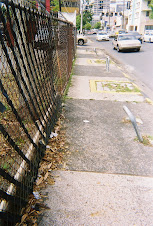
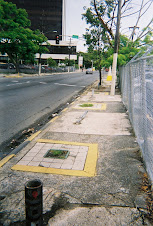
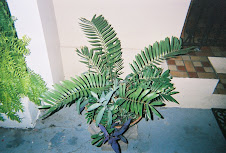




-22.jpg)
-25.jpg)
-24.jpg)






-16.jpg)
-13.jpg)
-08.jpg)
































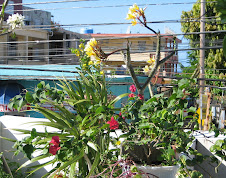
















No hay comentarios:
Publicar un comentario